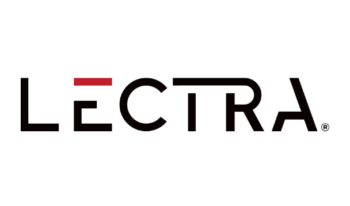
FABRIC, the Fashion and Business Resource Innovation Center, implemented Lectra’s solutions to make technology the central part of their operations, empowering designers to grow their brands to the next level thanks to on-demand domestic manufacturing.
From their early beginnings, they realized that one of the best ways they could help their designers be competitive in the industry as a whole was to integrate Gerber Technology, a Lectra company’s IoT-enabled solutions into their workflow. This foresight was critical when the pandemic hit, as people started to seize the opportunity to start their long-awaited apparel businesses but couldn’t access the resources or the manufacturing usually available overseas. The need to produce product domestically and in smaller batches, without a significant price increase for the customer, became essential.
The co-founders of FABRIC both knew first-hand how daunting, overwhelming and costly it was to start an apparel business and wanted to ease that burden for others. They called it “Democratizing Fashion”.
“We wanted to figure out how to provide the resources for an apparel entrepreneur under one roof and help these apparel entrepreneurs be more competitive with the bigger brands,” said co-founder Angela Johnson, on why they started FABRIC.
Their mission has resulted in helping nearly 800 apparel entrepreneurs bring their dreams to life and resulted in more than $6.8 mn donated in free and discounted programs and services. FABRIC is unique in that they don’t turn away brands that need help finding the right resources to manufacture garments. They focus their efforts on helping a higher volume of smaller brands, instead of allowing the production needs of bigger brands to edge out those most in need of their services.
This strategy of small batches and unique products required a reinvention of the process, as well as an ability to connect the dots between the different systems and managing data from design to the final product. FABRIC always wanted to support 21st century manufacturing for smaller, digitally-native brands, and when they saw Gerber’s Innovation Center and Microfactory in New York City—they were able to realize the possibilities.
Upon visiting the Innovation Center, co-founder Sherri Barry remarked how seamless and integrated the process was and imagined the possibilities for her own customers. She noted the ability to “start with any surface design, have it patterned in Gerber AccuMark® 2D/3D, visualized with a 3D sample, digitally printed, and then cut with an IoT-enabled cutter and sewn, really made on-demand production a reality.”
Gerber AccuMark allows the development of 2D digital patterns that can be visualized in 3D with production accuracy while avoiding the need for creating a physical sample and ensuring a perfect fit. When surface designs are involved, the images are positioned in AccuMark patterns, and then data is passed seamlessly to the Kornit Presto digital printer and accurately read and cut using the Gerber Z1 cutter with ContourVision™.
FABRIC continued to fuel the expansion of their technology suite by including Gerber YuniquePLM®, a cloud-based PLM system that helps to manage all the orders for their many brands. It also helps keep the data seamlessly connected to AccuMark and have it updated in real time. Adopting technology also helped FABRIC successfully pivot during the pandemic to large-batch production of PPE thanks to having a fully integrated technology-based system.
Because of their reliance on Gerber’s technology suite, FABRIC and The Fashioneer’s complete microfactory are now able to provide cutting edge solutions and much needed resources to up and coming brands and designers nation-wide and may someday rival the traditional fashion hubs of the world.





















